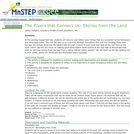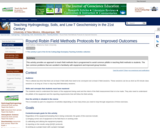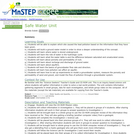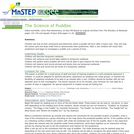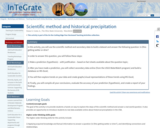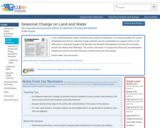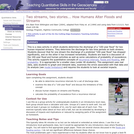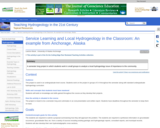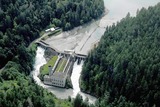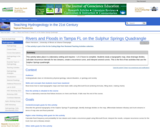
Student materials for this exercise include a Microsoft Excel spreadsheet with peak discharge data for the Hillsborough River and Curiosity Creek, a .zip file containing two versions (PDF and JPG) of the topographic map of the Sulphur Springs quadrangle, and a simplified sketch map of the quadrangle. The exercise is divided into three parts.
In Part I, students study the Sulphur Springs topographic quadrangle to gain a general idea of the landscape. The students identify drainage divides on the quadrangle and outline the drainage basins on the sketch map.
Part II includes calculating the frequency and probability of various sized floods and creating a recurrence curve using Microsoft Excel charts. Students apply their knowledge to decide whether to buy a house on the floodplain of the Hillsborough River.
In Part III, students use their results to interpret the potential for flooding along the main river and one of its tributaries. Students compare recurrence curves to deduce that having more years of data leads to a more reliable flood forecast. They search online to determine the reasons for particular floods and contrast the effects on the two streams.
(Note: this resource was added to OER Commons as part of a batch upload of over 2,200 records. If you notice an issue with the quality of the metadata, please let us know by using the 'report' button and we will flag it for consideration.)
- Subject:
- Biology
- Career and Technical Education
- Environmental Studies
- Geology
- Hydrology
- Life Science
- Mathematics
- Measurement and Data
- Physical Science
- Statistics and Probability
- Material Type:
- Activity/Lab
- Provider:
- Science Education Resource Center (SERC) at Carleton College
- Provider Set:
- Teach the Earth
- Author:
- Eileen Herrstrom
- Date Added:
- 03/30/2022

